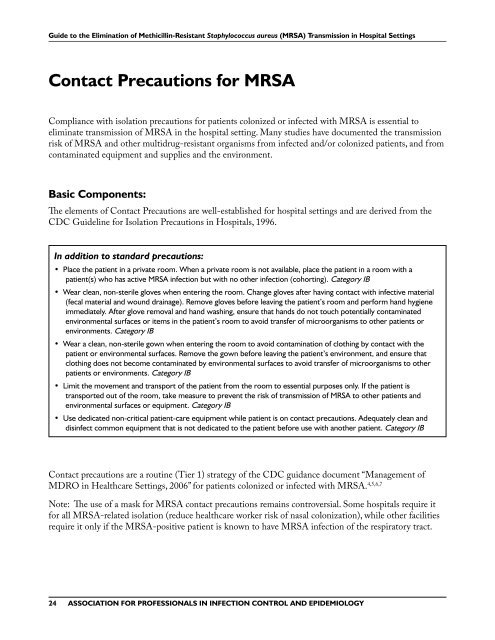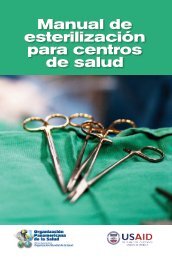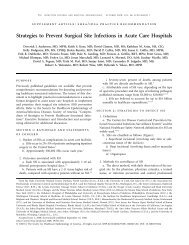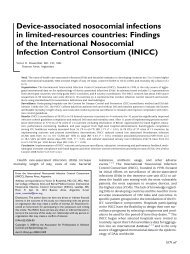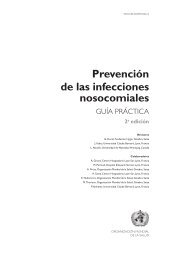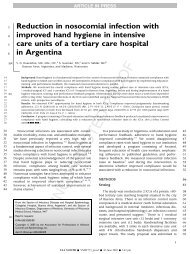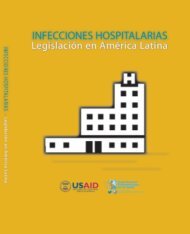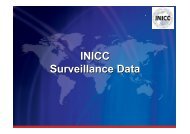APIC MRSA Elimination Guideline
APIC MRSA Elimination Guideline
APIC MRSA Elimination Guideline
Create successful ePaper yourself
Turn your PDF publications into a flip-book with our unique Google optimized e-Paper software.
Guide to the <strong>Elimination</strong> of Methicillin-Resistant Staphylococcus aureus (<strong>MRSA</strong>) Transmission in Hospital SettingsContact Precautions for <strong>MRSA</strong>Compliance with isolation precautions for patients colonized or infected with <strong>MRSA</strong> is essential toeliminate transmission of <strong>MRSA</strong> in the hospital setting. Many studies have documented the transmissionrisk of <strong>MRSA</strong> and other multidrug-resistant organisms from infected and/or colonized patients, and fromcontaminated equipment and supplies and the environment.Basic Components:The elements of Contact Precautions are well-established for hospital settings and are derived from theCDC <strong>Guideline</strong> for Isolation Precautions in Hospitals, 1996.In addition to standard precautions:• Place the patient in a private room. When a private room is not available, place the patient in a room with apatient(s) who has active <strong>MRSA</strong> infection but with no other infection (cohorting). Category IB• Wear clean, non-sterile gloves when entering the room. Change gloves after having contact with infective material(fecal material and wound drainage). Remove gloves before leaving the patient’s room and perform hand hygieneimmediately. After glove removal and hand washing, ensure that hands do not touch potentially contaminatedenvironmental surfaces or items in the patient’s room to avoid transfer of microorganisms to other patients orenvironments. Category IB• Wear a clean, non-sterile gown when entering the room to avoid contamination of clothing by contact with thepatient or environmental surfaces. Remove the gown before leaving the patient’s environment, and ensure thatclothing does not become contaminated by environmental surfaces to avoid transfer of microorganisms to otherpatients or environments. Category IB• Limit the movement and transport of the patient from the room to essential purposes only. If the patient istransported out of the room, take measure to prevent the risk of transmission of <strong>MRSA</strong> to other patients andenvironmental surfaces or equipment. Category IB• Use dedicated non-critical patient-care equipment while patient is on contact precautions. Adequately clean anddisinfect common equipment that is not dedicated to the patient before use with another patient. Category IBContact precautions are a routine (Tier 1) strategy of the CDC guidance document “Management ofMDRO in Healthcare Settings, 2006” for patients colonized or infected with <strong>MRSA</strong>. 4,5,6,7Note: The use of a mask for <strong>MRSA</strong> contact precautions remains controversial. Some hospitals require itfor all <strong>MRSA</strong>-related isolation (reduce healthcare worker risk of nasal colonization), while other facilitiesrequire it only if the <strong>MRSA</strong>-positive patient is known to have <strong>MRSA</strong> infection of the respiratory tract.24ASSOCIATION FOR PROFESSIONALS IN INFECTION CONTROL AND EPIDEMIOLOGY


